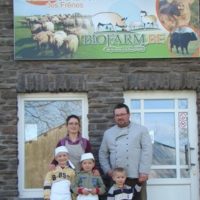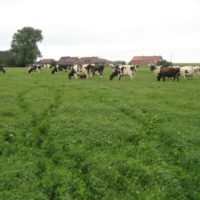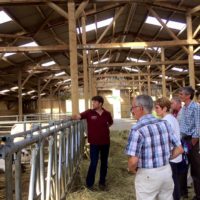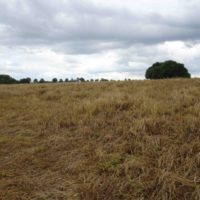Description
The history of Ed Payne’s farm (Tulsk, Co. Roscommon, Ireland) lies in the suckler, beef and sheep enterprises. In 2009 the decision was made to convert to a dairy enterprise. Grassland was traditionally grazed by set stocking, however a paddock system was incorporated into the dairy enterprise and is paying huge dividends for the farm. The farm grew 15.5 tonnes DM/ha and achieved 10 grazing events in each paddock in 2017. The Payne’s built knowledge on grassland management and incorporated it in to their farm through discussion group meetings with a local Teagasc advisor since converting to dairying. Soil samples are taken on the milking platform every year and on all other land every second year. Grass measuring is carried out over 40 times per year to gather data to help the farm grow and utilise more grass. Large efforts are being made to extend the grazing season on this farm like on-off grazing, strip grazing, back fence, multiple access points, roadways etc. Grazing season length was 275 days in 2017 (15th Feb to 15th Nov).
The main outcome in terms of grassland measurement was that it takes the guesswork out of managing grass. The farmer is able to identify grass surpluses and deficits quickly and cut surplus bales quickly if necessary. The farmer knows when to reduce, or cut out, meal feeding in spring based on the average farm cover carried out through measurement. Grass is the cheapest source of feed on the farm and should be maximised in the cow’s diet.
Abstract also available in:
Dutch | French | German | Italian | Polish | Swedish





